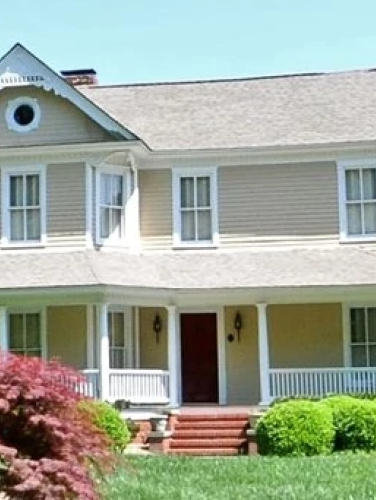
Thomas Alexander House
(ca. 1903)
Past owners of the Thomas Alexander House include a North Carolina governor, a Charlotte mayor, and a descendant of a framer of the state’s first Constitution.
2051 Sharon Ln, Charlotte, NC 28211
The lineage of Thomas Morgan Alexander (1855-1914) and the historical influence of the Alexander family on Mecklenburg County can be traced to Thomas's great-great-grandfather, Hezekiah Alexander (1722-1801), who arrived in 1766 with his wife Mary Sample and the first five of their ten children. A prolific farmer and landowner – he used enslaved labor to cultivate a 300+ acre farm – Hezekiah is perhaps best remembered as a framer of North Carolina’s first Constitution and Bill of Rights. The Hezekiah Alexander House is the last remaining structure of Charlotte’s Revolutionary War history.
Property Quick Links
The son of James Wallace Alexander (b. 1824) and Margaret Louise Reid (1829-1906), Thomas Alexander and his sister Martha Jane Alexander (1853-1932) were raised primarily by their mother, as James passed away in the 1860s. In 1873, Margaret purchased 186 acres in the Sharon township for $1,259.43, land once owned by her late father William Reid (1798-1864). That property became her homeplace tract and the site for the extant Thomas Alexander House.
Thomas married Antionette "Nettie" Watson White (1858-1916) of Cabarrus County in 1885. Together they had six children, all born between 1886 and 1896, four of whom lived to maturity. All three of Thomas and Nettie’s surviving daughters went to Queens Chicora College in Charlotte (now Queens University); little is known about their sole surviving son Thomas Neely Alexander. At the turn of the century, the Alexander household also included Thomas’ mother and sister (whose husband Charles Taylor Brown predeceased her in 1897), making the new two-story Alexander farmhouse all the more important. Built in the latest style, that house – now situated on Sharon Lane –blends features of the familiar Queen Anne Victorian architectural style with Classical elements in vogue at the time of its construction. Thomas farmed the property with the help of tenant farmers until his death in 1914. Nettie continued to live in the home with her two youngest children until her own death in 1916.
None of the surviving Alexander children chose to continue the family farm, prompting the sale of the house and some 120 acres to Odom Alexander (no relation) in 1922. Odom likely did not reside in the house before selling it and ninety acres two years later to attorney and former Charlotte mayor (serving from 1917 to 1921) Frank R. McNinch (1873-1950). McNinch also served in the North Carolina House of Representatives and as chairman of both the Federal Power Commission and the Federal Communications Commission. It is unknown whether McNinch ever moved into the Thomas Alexander House – he built a Colonial Revival house at 2401 Sharon Lane in 1925 – but he sold it in 1932 to fellow lawyer and former North Carolina governor (serving from 1921 to 1925) Cameron Morrison (1869-1953). Prior to purchasing the house, Morrison served as a U.S. Senator (1930-1932) and later as a congressman (1942-1944). The Thomas Alexander House and property became part of Morrison’s 3,000-acre experimental farm known as “Morrocroft.” Already residing in his own Tudor Revival-style mansion (circa 1927), Morrison offered the Thomas Alexander House as living quarters for the foreman of his Morrocroft operations: first, William S. Stewart in the early 1940s and later A. Ray Morrow in the 1950s. Since Morrison’s death in 1953, the Thomas Alexander House has changed hands several times.

